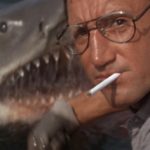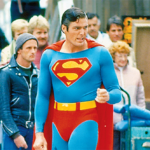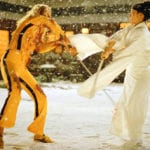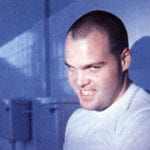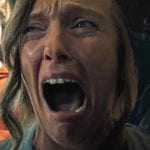 Music
Music  Music
Music  History
History 10 Less Than Jolly Events That Occurred on December 25
 Weird Stuff
Weird Stuff 10 Funny Ways That Researchers Overthink Christmas
 Politics
Politics 10 Political Scandals That Sent Crowds Into the Streets
 Weird Stuff
Weird Stuff Ten Bizarre Facts About The Doge Meme
 Our World
Our World 10 Ways Your Christmas Tree Is More Lit Than You Think
 Movies and TV
Movies and TV The 10 Coolest Stars to Set Sail on The Love Boat
 History
History 10 Things You Didn’t Know About the American National Anthem
 Technology
Technology Top 10 Everyday Tech Buzzwords That Hide a Darker Past
 Humans
Humans 10 Everyday Human Behaviors That Are Actually Survival Instincts
 Music
Music 10 Surprising Origin Stories of Your Favorite Holiday Songs
 History
History 10 Less Than Jolly Events That Occurred on December 25
 Weird Stuff
Weird Stuff 10 Funny Ways That Researchers Overthink Christmas
Who's Behind Listverse?

Jamie Frater
Head Editor
Jamie founded Listverse due to an insatiable desire to share fascinating, obscure, and bizarre facts. He has been a guest speaker on numerous national radio and television stations and is a five time published author.
More About Us Politics
Politics 10 Political Scandals That Sent Crowds Into the Streets
 Weird Stuff
Weird Stuff Ten Bizarre Facts About The Doge Meme
 Our World
Our World 10 Ways Your Christmas Tree Is More Lit Than You Think
 Movies and TV
Movies and TV The 10 Coolest Stars to Set Sail on The Love Boat
 History
History 10 Things You Didn’t Know About the American National Anthem
 Technology
Technology Top 10 Everyday Tech Buzzwords That Hide a Darker Past
 Humans
Humans 10 Everyday Human Behaviors That Are Actually Survival Instincts
Top 10 Behind The Scenes Facts About Tim Burton Movies
As a child, Tim Burton grew up feeling like he didn’t belong. He spent much of his free time watching horror films and hanging around with gravediggers at the local cemetery. The youngster eventually threw himself into his artwork, doodling twisted versions of monsters from classic horror flicks. After a stint at the California Institute for Arts, Burton landed a job at Disney. He produced concept art for a number of titles, including The Fox and the Hound and The Black Cauldron. While creative differences forced Burton to split from Disney, he soon landed a gig directing Pee-wee’s Big Adventure. The film proved a runaway success, serving as the catalyst for Burton’s illustrious career.
To this day, the iconic filmmaker still uses his artistic talents to brainstorm ideas, infusing his work with the gothic style that audiences have come to know and love. Burton’s movies have now racked up over $4 billion worldwide, making him one of the top grossing directors of all time. Given this impressive milestone, we take a look at just 10 behind-the-scenes facts from the director’s career in film.
Top 10 Behind The Scenes Facts About Dystopian Sci-fi Movies
10 Beetlejuice Nearly Got a Sequel
In 1991, Tim Burton asked screenplay writer Jonathan Gems to work on a sequel called Beetlejuice Goes Hawaiian. The film would see Michael Keaton reprise his role as Beetlejuice, a trickster ghost who “exorcises” humans from haunted properties. In the first movie, Beetlejuice works with a dead couple to scare away the Deetz family from their home in Connecticut. This plan goes horribly wrong, and the ghoul ends up getting eaten by a giant sandworm.
The sequel would initially focus on Beetlejuice’s fall from grace. Stripped of his bio-exorcist duties, our mold-covered antagonist is forced to stack shelves at a supermarket in Hell. Meanwhile, the patriarch of the Deetz family attempts to build a resort on a small Hawaiian island. His goth daughter Lydia (Winona Ryder) believes the construction work is destroying the island’s natural beauty. Hoping to scare some sense into her father, Lydia travels to the netherworld to enlist the aid of Beetlejuice. Journeying through Hell, she meets shapeshifting worms, skeletal creatures with lungs for eyes, undead beaver coats, and a guy with feet for a head – all standard fare for a Tim Burton film. She eventually meets up with Beetlejuice, and the pair hatches a plan to sabotage the resort.
The uneasy alliance falls apart when Beetlejuice doesn’t get his way (he wants to marry Lydia in the hopes of becoming mortal again). He then turns into “Jucifer: Destroyer of Worlds” and starts attacking the island, turning cars into metal wolves and reanimating prehistoric animals. Beetlejuice – now a giant moth, spewing killer slugs everywhere – is eventually driven back to the netherworld after his name is said three times.
The sequel remained in limbo for decades, with the script going through several rewrites. But in 2016, Burton confirmed the project was a go: “We have talked with the cast members we wanted for the film and they are all on board; this includes both Winona and Michael. We have the script in hand, everything is in place – all we need to do now is get ready to start filming.” While rumors surrounding the project persist to this day, Warner Bros. officially canceled the movie in 2019.
9 Jack Nicholson Saved Mars Attacks
The world has Jack Nicholson to thank for Mars Attacks. Most of the actors were hesitant about starring in an alien invasion movie, especially one in which many of the protagonists are either experimented on or killed. “At one point we actually thought we were going to have to cancel the film. The guy who saved our butt was Jack Nicholson,” explained the movie’s screenwriter.
Nicholson was brought onto the project when he saw Tim Burton at an airport. As it turned out, Nicholson had already read the script for Mars Attacks. Burton immediately saw an opportunity, offering the star a choice between two characters: “I asked which part he wanted to play – whatever you want. He said, ‘How about both of them?’” And so Nicholson ended up playing the role of both the U.S. president and a sleazy land developer named Art Land. Things ultimately went south for both characters: one is crushed by a giant globe, and the other is vaporized by a laser beam. After hearing about Nicholson’s involvement in the film, a wave of celebrities followed suit. Burton signed up the likes of Danny DeVito, Glenn Close, Jack Black, Michael J. Fox, Natalie Portman, Pierce Brosnan, and Sarah Jessica Parker.
8 Planet of the Apes Needed an Ape School
When 20th Century Fox gave Tim Burton the opportunity to direct his own take on the Pierre Boulle novel Planet of the Apes, the director insisted on getting the right mannerisms for his ape characters. So the studio sent many of the actors, including Tim Roth, Helena Bonham Carter, and David Warner, to a special “ape school.” The team spent six weeks under the tutelage of a former Cirque du Soleil gymnast, learning how to talk, walk, and fight like apes.
The stuntman who came up with the program spent hours studying the behavioral patterns of different zoo animals. Each primate, he found, was unique. Orangutans, gorillas, and chimps all carry themselves differently. But getting the cast to master these movements was tricky. “When we first started out, they were all walking like humans,” explained stunt coordinator Charles Croughwell. “So we had to roll their feet to the outside… almost bow-legged. Cowboys make great apes, because they’re bow-legged.”
The overall physical transformation proved challenging, with actors spending around four hours in the makeup chair each day. The cast would then work until around nine o’clock at night. Once filming had wrapped up for the day, the makeup artists would set to work removing the prosthetics – a process that required another 1.5 hours. Tim Roth, who played the role of the ape warlord General Thade, found the outfits to be particularly uncomfortable. His tight-fitting suit gave him trapped nerves and herniated vertebrae. He likened the experience to “being punched in the arm continuously.” Tim Burton also injured himself on set while imitating an ape’s waddle. He ended up falling over and breaking a rib.
7 Jack Nicholson Made a Killing as the Joker
Before signing on to do Batman in 1988, Jack Nicholson was on a roll. The New Jersey actor had already starred in a number of critically-acclaimed movies, including One Flew Over the Cuckoo’s Nest and The Shining. This meant he could command whatever salary he wanted. The actor’s contract negotiation remains the stuff of legend. Firstly, his time on set was managed around when his favorite NBA team, The Los Angeles Lakers, was playing. He would show up on set no earlier than nine o’clock in the morning. And his agreed salary was an eye-watering $6 million. Although this figure was less than his usual take of $10 million, he also convinced Warner to give him a cut of the film’s box office earnings and merchandise. Nicholson even secured money from other films in the franchise, despite making no further appearances as the Clown Prince.
Batman grossed over $400 million at the global box office. It is estimated that Nicholson bagged anywhere between $60 million and $90 million for his time as the Caped Crusader’s nemesis. The film’s meteoric success also spurred a massive uptick in the sale of Joker toys, boosting Nicholson’s earnings even further. When adjusted for inflation, this means Nicholson made just shy of $200 million.
6 Johnny Depp Had a Bad Time on Edward Scissorhands
A young Johnny Depp got one of his earliest breaks as the timid misfit Edward Scissorhands. The studio initially wanted to give the role to Tom Cruise. But Winona Ryder, who played Scissorhands’ love interest, ended up having a major role in the casting process. She suggested casting her then-boyfriend Johnny Depp in the lead role. It’s perhaps fortunate that Ryder got her way, as Michael Jackson was reportedly desperate to play the part (Burton ignored his phone calls).
Work on the film commenced in 1990 in Lutz, Florida. It took around three hours to complete Depp’s makeup and hair, and an additional hour just to sew him into his outfit. Working in the Sunshine State proved difficult for most of the cast and crew. The intense heat caused Depp to collapse while filming a scene in which his character tries to evade the authorities. Given the star’s costume was made up of black leather and material from an old sofa, this was perhaps unsurprising.
The cast was plagued by health problems. Both Tim Burton and actor Vincent Price fainted on separate occasions. As Price was suffering from ill health at the time (Scissorhands was his last film), the hot studio lights exacerbated his already fragile condition. Meanwhile, screenwriter Caroline Thompson ended up with a bad case of heat rash. “I went back to my room at one point, I took off my clothes and I felt like Linda Blair in the Exorcist,” she joked. In another scene, Edward’s neighbors force-feed him their home cooking. The scene was shot so many times that Depp ended up vomiting the food straight back up.
5 An Entire Town was Built for Sleepy Hollow
In 1998, Tim Burton started filming Sleepy Hollow, a reimagining of Washington Irving’s classic fairytale about a Headless Horseman. While the crew initially wanted to shoot the film in Upstate New York, the area failed to capture the story’s foreboding atmosphere. Production was eventually moved to the UK, a decision that was partly inspired by Burton’s obsession with the low-budget English horror flicks of the ‘50s and ‘60s. There, the crew constructed the entire town of Sleepy Hollow from scratch. It took three months to mirror the Dutch hamlet’s nineteenth century architecture. Houses, churches, and pubs were all built around a small duck pond in Buckinghamshire. Livestock was ushered into the surrounding farmland, bringing the area alive with the sound of ducks, cows, and sheep. And a towering windmill, featuring blades that weighed around a ton each, was built outdoors.
Many of the outdoor scenes were actually filmed on sound stages. Indoor sets were used to film the church graveyard, fields of wheat, a snow swept battlefield, and the Tree of the Dead. Real trees were used for much of the forest areas. The larger trees, however, were made from molds of genuine oaks. Reaching heights of up to 30 feet, these gigantic fiberglass structures were carefully planted inside a sound stage in Leavesden. The fake trees were fitted with steel frameworks, each supporting a network of real branches. According to Burton, the set ended up becoming a little too convincing: “We built this forest, and we were filming in there, and it started to become an actual forest. Bugs and birds started moving in.”
4 Squirrels Underwent Training for Charlie and the Chocolate Factory
Burton’s version of Charlie and the Chocolate Factory sees Willy Wonka and his guests visit the Nut Sorting Room – a clear nod to the source material. There, they observe a bunch of squirrels separating the good nuts from the bad ones. To give the bizarre spectacle a degree of authenticity, Burton decided to train real squirrels. And so a group of animal trainers set to work teaching 40 squirrels to sort through an endless supply of walnuts.
The animal trainers started bottle feeding many of the squirrels from birth, a process that helped forge a strong parent-child bond. Others were recruited from squirrel shelters in England. Each time they mastered a particular skill, a treat was given. Through positive reinforcement techniques, the team gradually taught the creatures to sit and sort through the nuts. Michael Alexander, the head trainer, estimated that around 2,000 repetitions of the task were needed before just one squirrel could reliably place a nut in the correct place. All in all, the training took around 19 weeks to complete.
3 Disney Fired Burton for Making Frankenweenie
Released in 2012 as a feature-length animation, Frankenweenie tells the tale of a young boy who loses his pet dog, Sparky. The grief-stricken child concocts a formula to resurrect his beloved companion. The plan works. While the reanimated dog looks a little worse for wear – with Frankensteinian bolts sticking out of his neck and rows of stitches weaving across his body – Sparky’s loving soul is successfully restored. But things take a turn for the worse when the formula falls into the wrong hands, and the town is besieged by monstrous creatures.
Burton also made a live-action version of Frankenweenie in 1984. The short film, which follows the same general premise as the animated remake, was one of Burton’s earliest attempts at directing. He managed to secure funding for the project while working as an animator at Disney. But the studio bigwigs were deeply unhappy with the finished product, claiming it was far too dark to show young children. The company immediately fired Burton, accusing him of wasting money. Disney had a slight change of heart after their protege’s directorial career took off, releasing the original version of Frankenweenie in 1992.
Frankenweenie was inspired by Tim Burton’s own childhood, right down to the characters, setting, and plot (resurrections aside). The animation team even traveled to the director’s hometown of Burbank, California, to get a feel for his upbringing. Burton’s own dog, Peppi, came into his life when he was just three. Tragically, the pup died from canine distemper a few years later. “If I could have brought him back to life, I would [have]. I did it in film instead,” Burton explained.
2 Alice in Wonderland’s Green Screens were Maddening
Released in 2010, Alice in Wonderland generated a staggering $1 billion in global ticket sales. Burton’s dark adaptation of the children’s classic relied on unprecedented levels of CGI, with around 90 percent of the film using some form of green screen technology. These scenes were filmed over a period of just 40 days. Most of the backgrounds and effects were then added in post-production, creating problems for both the cast and crew.
The absence of real-world items or backdrops left the actors with very little to physically work with. Entire characters were even made using digital wizardry, including the Cheshire Cat and White Rabbit. On top of this, the green screens made the cast physically sick. “I don’t mind having to spew dialogue while having to step over [a] dolly track while some guy is holding a card and I’m talking to a piece of tape,” explained Johnny Depp, who played the Mad Hatter. “But the green beats you up. You’re kind of befuddled at the end of the day.” Tim Burton went to great lengths to avoid getting sick, using lavender-tinted glasses to counteract the green screen’s influence.
Meanwhile, the animation and visual FX teams were given just nine months to replace the green screens with vivid and detailed backdrops, essentially conjuring entire sets out of thin air. According to VFX supervisor Ken Ralston, the green screen provided a huge amount of flexibility for bringing Lewis Carroll’s topsy-turvy world to life. Although the VFX guru admits the process can be “visually and psychologically exhausting,” he believes the film would have been impossible using any other technology.
1 Batman Returns Flew Penguins Aboard a Cooled Plane
Tim Burton only agreed to do a second Batman movie on the understanding that it took the series in a new and unexpected direction. Cue The Penguin (Danny DeVito) and his penguin commandos. Batman Returns sees the Dark Knight face off against an army of penguins as they attempt to bomb Gotham City into oblivion. Suffice to say, choreographing these scenes was no simple task.
The team flew real penguins in from an animal shelter in England. The hold of the plane was refrigerated to keep the birds comfortable during the flight. Given that Los Angeles was around 37 degrees Celsius at the time (100 degrees Fahrenheit), additional air conditioning was required on set. The penguins even had their own air conditioned trailers and swimming pools. With the sound stages cooled to near-freezing temperatures, most of the cast and crew were forced to acclimatize to the bizarre working conditions.
The Penguin’s army was coaxed around the stage using fresh fish, shipments of which were delivered directly from the local docks. For the scenes where the studio couldn’t use real penguins, sophisticated animatronics were used instead. Legendary VFX artist Stan Winston designed robo-penguins that were so realistic they ended up fooling the real deal. As the film crew was clearing away their equipment, they discovered an emperor penguin snuggling next to one of the animatronics.
Batman Returns was Burton’s final foray into the comic book series. The director claims the studio ended up treating the sequel like a commodity, something merely designed to sell merchandise to children. “[W]e started to get comments from McDonald’s like, ‘What’s all that black stuff coming out of the Penguin’s mouth?’ So, people were just starting to think of these films in terms of marketing. That’s the new world order.” Burton was not invited to do another film.
10 Fascinating Behind The Scenes Images From Movie History

